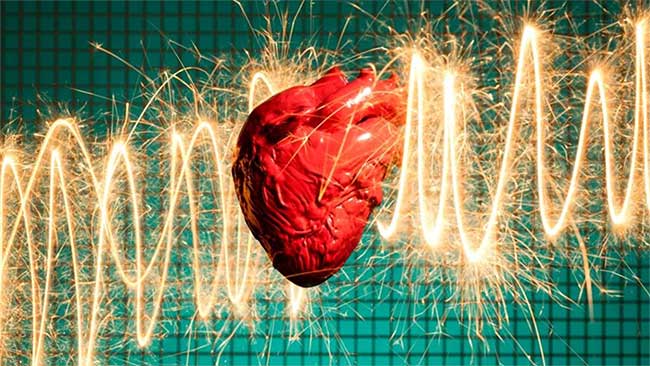Every 40 seconds, an American experiences a heart attack. This statistic means that approximately 805,000 cases of myocardial infarction occur in the United States each year. But what about animals? Do they experience weakness or heart attacks like humans do?
The answer is that most animal species around the world do not suffer from heart attacks. Even one of humanity’s closest relatives, the chimpanzee, does not face this condition. Of course, they can still encounter some cardiovascular issues, but heart attacks are extremely rare.
Philip Gordts, a heart disease researcher at the University of California, San Diego, states: “In general, animals typically do not die from the typical heart attacks that you see in humans“.
What is a Heart Attack?
A heart attack occurs when a blood vessel supplying oxygen to the heart becomes blocked. When a part of the heart dies, it cannot contract and cannot transmit electrical waves throughout the rest of the heart. This can lead to the heart stopping, resulting in death unless early interventions, such as artificial respiration, are performed.
Flavio Fenton, a researcher studying both human and animal hearts, notes: “All mammalian hearts are very similar. Therefore, in principle, most of them could suffer from heart attacks.“
Although theoretically, mammals can suffer from heart attacks, in reality, they do not. For example, heart attacks are very rare in dogs. According to a scientific paper published in 2009, even genetically modified rodents with high cholesterol and lipid levels, intended to induce atherosclerosis, rarely experience heart attacks.

Theoretically, mammals can suffer from heart attacks, but in reality, they do not.
Therefore, instead of asking why other animal species do not suffer from heart attacks, it makes more sense to ask why humans do. Do you think this issue in humans is related to a sedentary lifestyle and poor diet? These factors certainly play a significant role. After all, atherosclerosis is the leading cause of heart disease, and an unhealthy diet high in red meat and a lack of exercise are risk factors that contribute to this condition.
However, statistics show that 15% of people who experience their first heart attack lead healthy lives and have no risk factors for heart disease. Thus, scientists believe that another factor contributing to heart attacks in humans is due to mutations that are unique to us.
In a 2019 study published in the Proceedings of the National Academy of Sciences, scientists suggested that this mutation inactivates a gene responsible for producing Neu5Gc. When researchers disabled this gene in genetically modified mice with high cholesterol that developed atherosclerosis, these mice developed the disease at twice the severity compared to those without the gene disabled.
Broadly speaking, this mutation may explain why humans are more prone to atherosclerosis and heart attacks while other mammals are not.
Heart Attacks in Vertebrates
While there is substantial evidence suggesting that non-human animals are nearly immune to heart attacks, the reality is that there have not been many experiments to prove this. Tomasz Owerkowicz, a vertebrate physiologist at California State University, told LiveScience: ‘There is very little scientific literature discussing heart attacks in any mammal.’
This scientist further explained: ‘You may observe animals dying suddenly. However, it is very rare to actually perform an autopsy and find blockages in the coronary arteries. Therefore, we do not know if that animal had a heart attack.’
Based on the structure of the heart, researchers can make predictions about which vertebrate species are most susceptible to heart attacks. According to Owerkowicz, the hearts of mammals and birds have a single source of oxygen supply: the coronary artery. In other words, in mammalian hearts, the only way to receive blood and oxygen throughout is through this vessel. For this reason, if the coronary artery becomes blocked in birds or mammals, the heart will lose its oxygen supply, and both birds and mammals are likely to encounter problems.
According to Owerkowicz, the hearts of some vertebrate animals that are not mammals have a distinct system to protect them from heart attacks. In addition to blood vessels and capillaries supplying oxygen, they have another system that allows oxygenated blood to flow deep into the heart’s chambers, similar to how water moves into the air sacs of a sponge. Because blood permeates deeply into heart tissue, oxygen can diffuse directly from the blood into heart cells.
This explains why non-mammalian vertebrates are “immune” to heart attacks. Owerkowicz mentioned that he once occluded the coronary artery of a deep-sea fish, but it did not cause any health issues for it.




















































